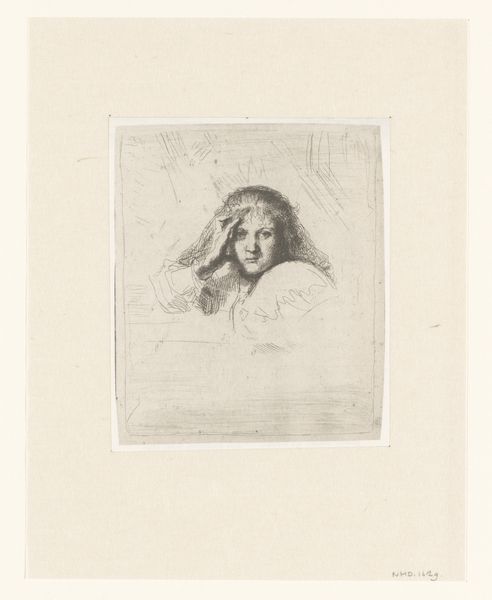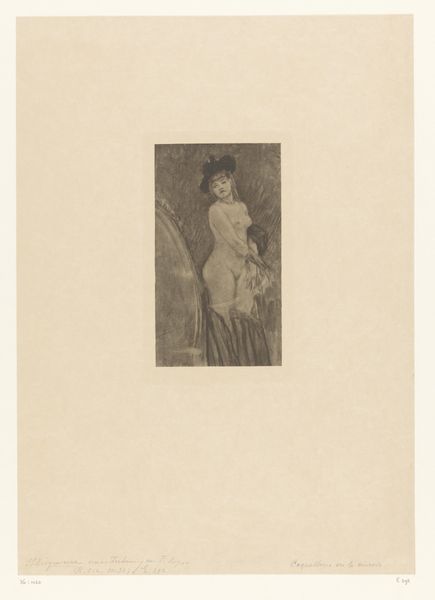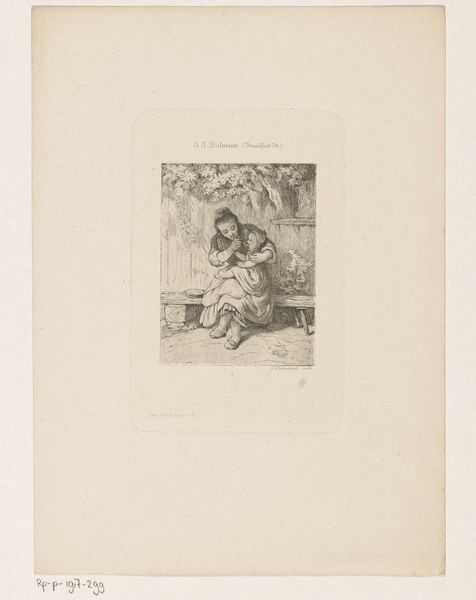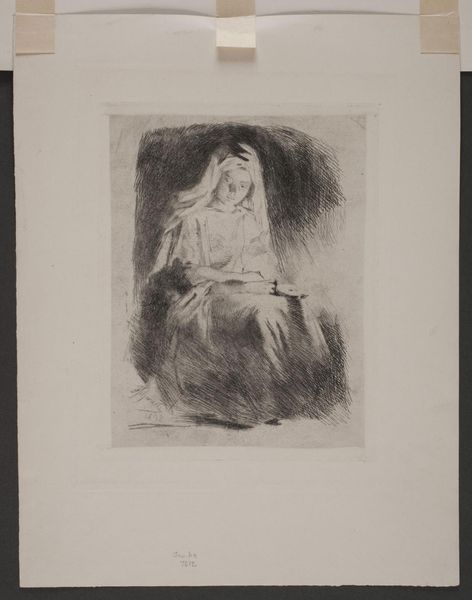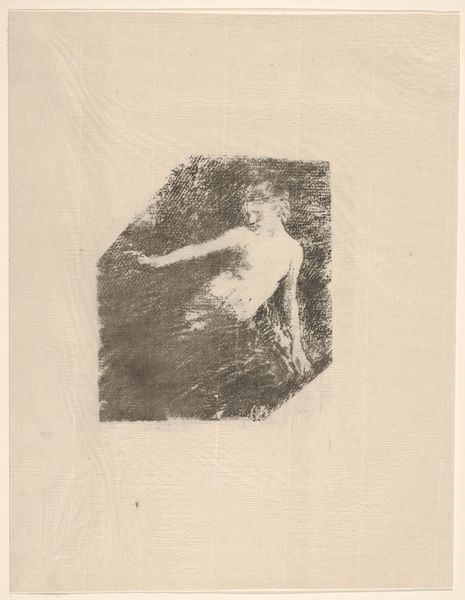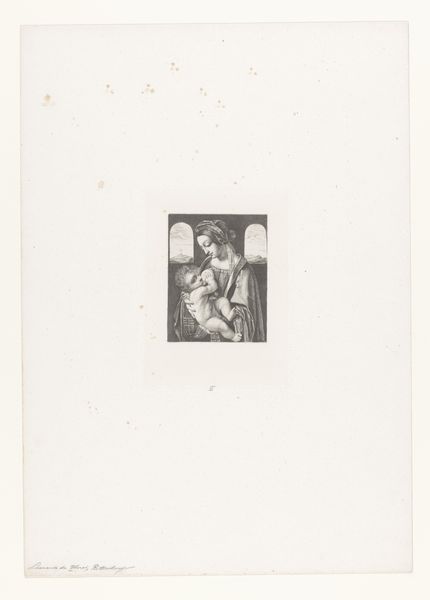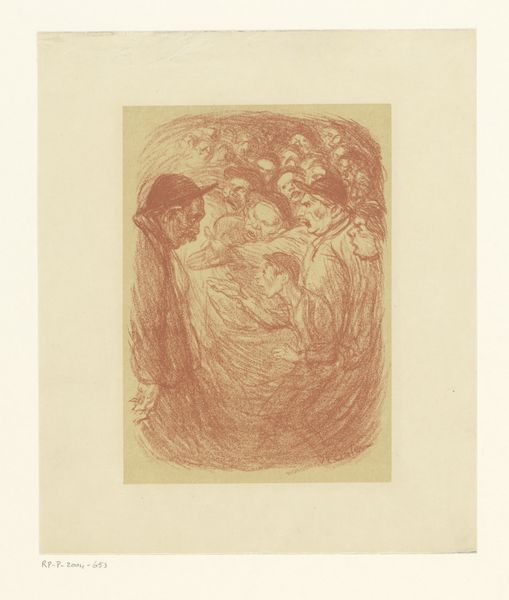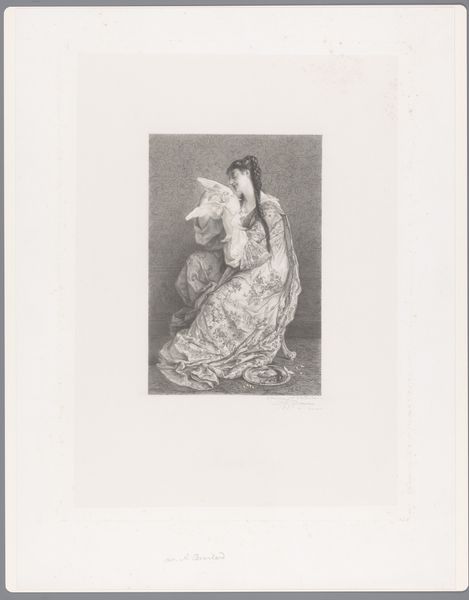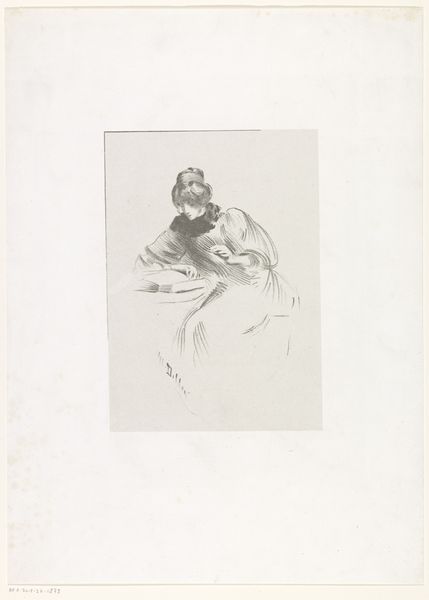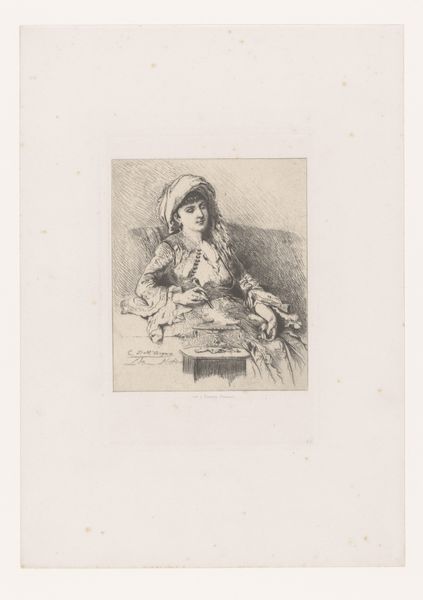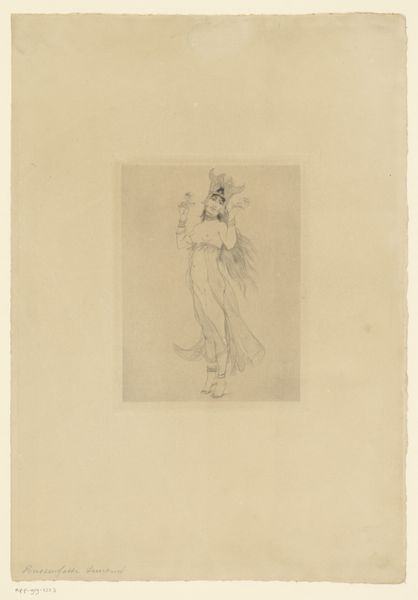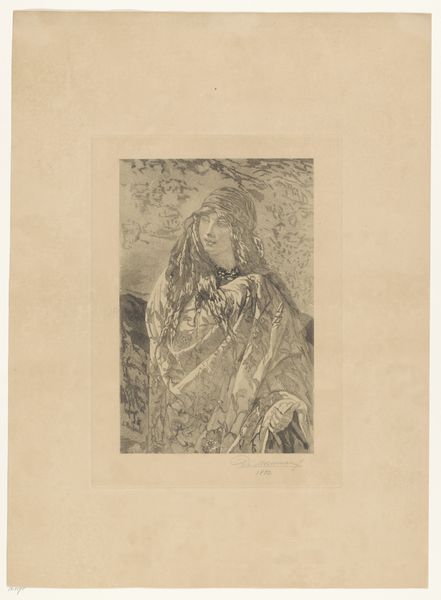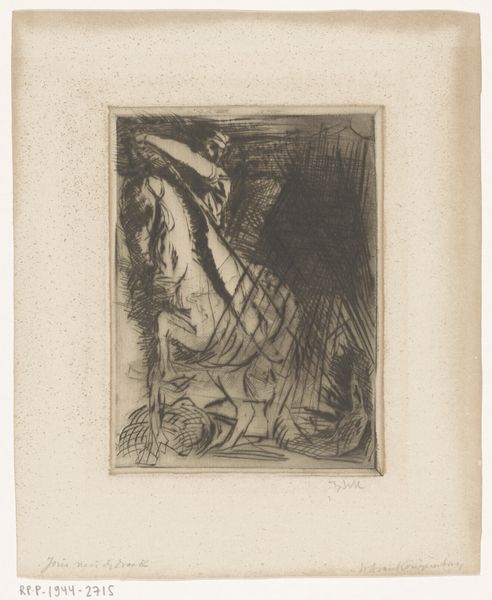
drawing, print, etching, paper, ink
#
drawing
#
ink paper printed
# print
#
etching
#
landscape
#
paper
#
ink
#
realism
Dimensions: height 464 mm, width 340 mm
Copyright: Rijks Museum: Open Domain
Curator: Allow me to introduce "Young Woman Knitting in a Landscape" by Jean-Baptiste van der Sypen, likely created between 1827 and 1881. The artwork is an etching in ink on paper, demonstrating the artist’s skills in printmaking. Editor: It’s ethereally melancholic. The cool blue ink gives the entire scene a contemplative, almost dreamlike quality. The woman's downward gaze and the soft landscape behind her...it’s a mood. Curator: The process is really central here. Etching would have required a labor-intensive series of steps: coating the plate, drawing through the wax, the acid bath, and the final printing. Her labour mirroring this production. Editor: Absolutely, and knitting itself! She’s making something tangible, a humanizing detail amid this grand landscape. This reminds me of idealized domesticity versus a more direct engagement with labour as an art of its own. I think it evokes a sense of comfort found within familiar actions and simple materials. Curator: I see her clothing, along with the pastoral landscape itself as markers of class and social standing. Editor: Indeed, the head covering also could carry specific cultural meanings. Her knitted material reflects a certain social context, a labor for her home that at once confines and perhaps protects. There's a symbolic duality there. Curator: How do we read that knitting in relation to artistic production itself? Perhaps Van der Sypen asks us to value different forms of labour—the quiet, domestic versus the celebrated fine art? Editor: It highlights this delicate interplay between personal expression, artistic representation, and everyday necessity, echoing across the visual vocabulary of art and craft. Considering how visual arts preserve the cultural narratives of labour practices brings nuance. Curator: These small scale reproductions provided people in that era the ability to take pieces of fine art into their own spaces and engage in conversations about process. It gives us a fascinating perspective into how we understand the connections and disconnections between social status and the work that people did at this time. Editor: Analyzing the artist’s process illuminates broader social questions, prompting considerations regarding status, gender, cultural norms, artistic traditions. It definitely pulls viewers into contemplating their relation to creativity itself.
Comments
No comments
Be the first to comment and join the conversation on the ultimate creative platform.
